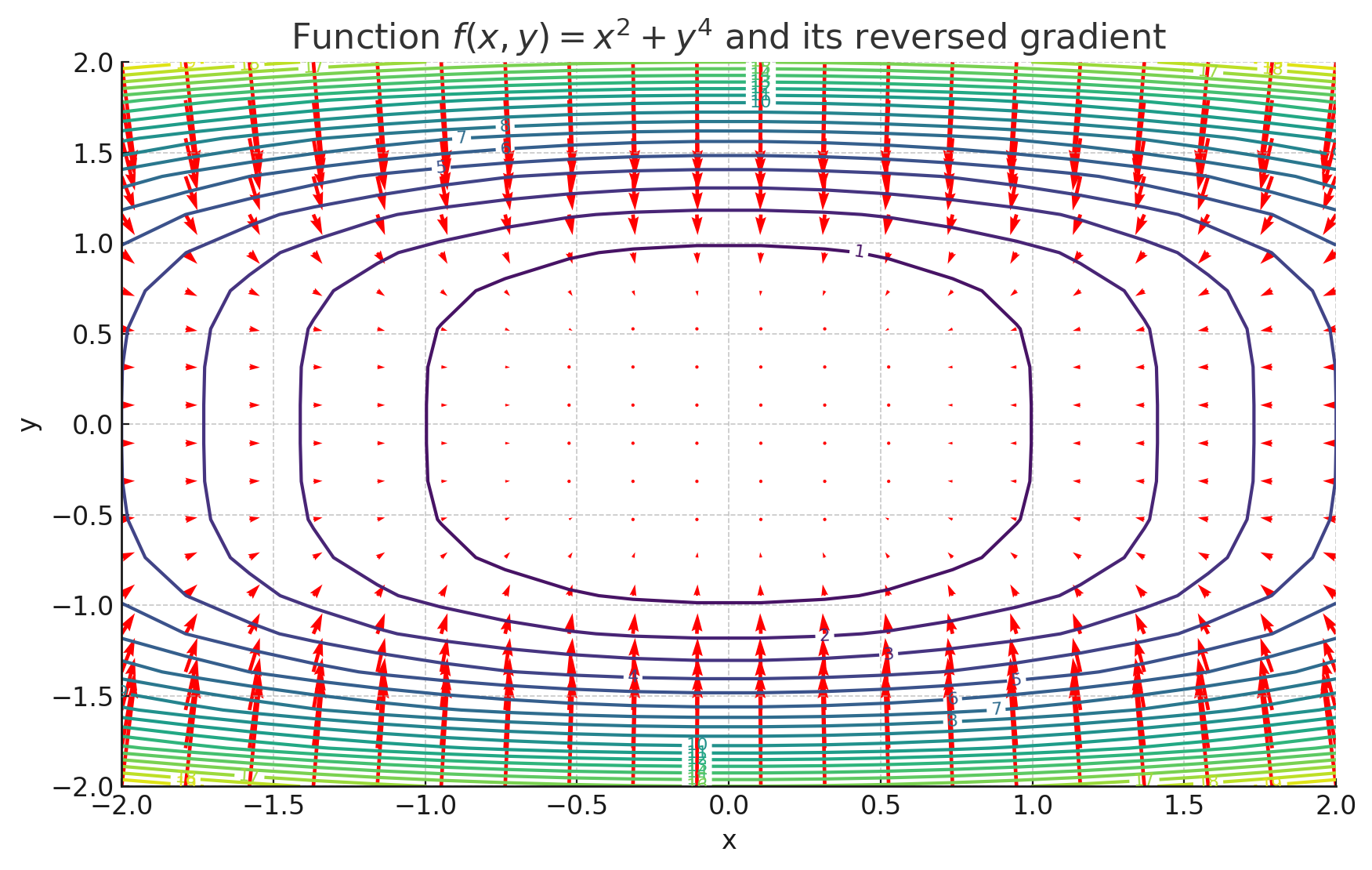導関数と定義に従って求める例題について

1. 導関数
導関数の定義は以下の極限で与えられます。
\[ f'(x) = \lim_{\Delta x \to 0} \frac{f(x + \Delta x) – f(x)}{\Delta x} \]
導関数は、ある関数が変数の変化に対してどのように変化するかを表すものです。具体的には、関数 \( f(x) \) の導関数 \( f'(x) \) は、点 \( x \) における \( f(x) \) の変化率を示します。これは、接線の傾きや、変数 \( x \) の微小な変化に対する \( f(x) \) の増加量、微分を意味します。
2. 例題
2.1. 例題1: \( f(x) = x^2 + 3x \)
導関数の定義に従って、
\[ f'(x) = \lim_{h \to 0} \frac{(x+h)^2 + 3(x+h) – (x^2 + 3x)}{h} \]
展開して整理すると、
\[ = \lim_{h \to 0} \frac{x^2 + 2xh + h^2 + 3x + 3h – x^2 – 3x}{h} \]
\[ = \lim_{h \to 0} \frac{2xh + h^2 + 3h}{h} = \lim_{h \to 0} (2x + h + 3) = 2x + 3 \]
2.2. 例題2: \( f(x) = \frac{1}{x} \)
導関数の定義に従って、
\[ f'(x) = \lim_{h \to 0} \frac{\frac{1}{x+h} – \frac{1}{x}}{h} \]
分母の通分を行い、整理すると、
\[ = \lim_{h \to 0} \frac{\frac{x – (x+h)}{x(x+h)}}{h} = \lim_{h \to 0} \frac{-h}{h x(x+h)} \]
\[ = \lim_{h \to 0} \frac{-1}{x(x+h)} = \frac{-1}{x^2} \]
2.3. 例題3: \( f(x) = \sqrt{x} \)
導関数の定義に従って、
\[ f'(x) = \lim_{h \to 0} \frac{\sqrt{x+h} – \sqrt{x}}{h} \]
分子・分母に$\sqrt{x+h} +\sqrt{x}$をかけると、
\[ = \lim_{h \to 0} \frac{\left(\sqrt{x+h} – \sqrt{x}\right)\left(\sqrt{x+h} + \sqrt{x}\right)}{h \left(\sqrt{x+h} + \sqrt{x}\right)} \]
\[= \lim_{h \to 0} \frac{(x+h) – x}{h \left(\sqrt{x+h} + \sqrt{x}\right)} = \lim_{h \to 0} \frac{h}{h \left(\sqrt{x+h} + \sqrt{x}\right)} \]
\[= \lim_{h \to 0} \frac{1}{\sqrt{x+h} + \sqrt{x}} = \frac{1}{2\sqrt{x}} \]
2.4. 例題4: \( f(x) = e^x \)
導関数の定義に従って、
\[ f'(x) = \lim_{h \to 0} \frac{e^{x+h} – e^x}{h} \]
指数の性質を用いると、
\[ = \lim_{h \to 0} \frac{e^x e^h – e^x}{h} = \lim_{h \to 0} \frac{e^x(e^h – 1)}{h} \]
\[ = e^x \lim_{h \to 0} \frac{e^h – 1}{h} = e^x \cdot 1 = e^x \]
2.5. 例題5: \( f(x) = \sin(x) \)
導関数の定義に従って、
\[ f'(x) = \lim_{h \to 0} \frac{\sin(x+h) – \sin(x)}{h} \]
加法定理を利用して、
\[ = \lim_{h \to 0} \frac{\sin(x)\cos(h) + \cos(x)\sin(h) – \sin(x)}{h} \]
整理すると、
\[= \lim_{h \to 0} \frac{\sin(x)(\cos(h) – 1) + \cos(x)\sin(h)}{h} \]
\[ = \sin(x) \cdot 0 + \cos(x) \cdot 1 = \cos(x) \]




